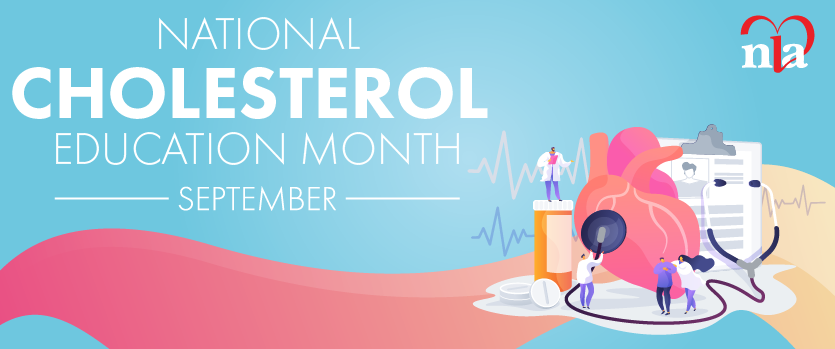Winter 2021 2022 LipidSpin Articles
 JOSEPH J. SASEEN, PharmD, CLS, FNLA* |
From the NLA President: Going the Distance for Rural PatientsFriends and fellow members of the NLA, I am pleased to present you the SWLA 2021/2022 edition of the LipidSpin. This edition contains a wealth of information surrounding the challenges of medical care in rural populations. When many people think of the United States, images of Times Square and the Hollywood sign flash through their mind. However, according to the United States Census Bureau, “one in five Americans, live in rural America”. The term rural is ambiguous but is defined for us by... more |
 CATHERINE J. McNEAL, MD, PhD, FNLA* |
From the SWLA President: Impact of Rurality on HealthIdentities and experiences are individual to each American - where we come from, who our family is, how we fit into those molds. Individual identity is largely impacted by environment, which heavily depends on zip code. People in 10001 of New York City, 90001 of LA, and 60007 of Chicago live in bustling cities full of energy and the glamours of city life, where people in 67764 of Logan, Kansas, in 59010 of Big Horn, Montana, in 35976 of Guntersville, Alabama, live in fields of green and have... more |
 CHIMA NWIZU, MD, FNLA*  CHIBUIKEM NWIZU |
Clinical Feature: Cardiovascular Disease in the Rural American PopulationCardiovascular Disease in Rural American Population |
 LAUREL A COPELAND, PhD  M HASAN RAJAB, PhD |
EBM Tools for Practice: Hypertriglyceridemia and the Risk of Cardiovascular Disease and Pancreatitis in a Veteran PopulationThe Veterans Health Administration (VA) is the nation’s largest integrated health care delivery system serving more than 11 million patients. There recently has been renewed emphasis on health care disparities in the US and within the VA including focus on unique Veteran demographics. Pertinent to this issue of LipidSpin is that in 2017, one quarter of the total Veteran population was residing in rural or highly rural communities including 31% of those relying on the VA for health care. The... more |
 SAMIP SHETH, MB  ANANDITA AGARWALA, MD  DON WILSON, MD, FNLA* |
Lipid Luminations: Memorial to Bill Neal - A Pioneer in Pediatric Cardiovascular Health William “Bill” Neal, MD (1940-2021), was a pediatric cardiologist who pioneered the “Coronary Artery Risk Detection in Appalachian Communities” (CARDIAC) initiative.(1) CARDIAC is a comprehensive school-based risk factor surveillance, intervention, and research initiative designed to address the mortality and morbidity associated with obesity, diabetes, and cardiovascular disease (... more |
 LEANN RYCHLIK, MS, RD |
Practical Pearls: Navigating A Food DesertImagine you have five dollars to spend on dinner for yourself and your two children. The nearest grocery store is 10 miles away and you have no car. The only food options within walking distance are a gas station/convenience store, a dollar store, and a barbecue food truck. So, what’s for dinner? Many of us probably cannot imagine not having the means to eat what we want when we want. Every day we decide between something healthy and nutritious... more |
 SUSAN M. DIMICK, MD, MS, FACP, FNLA* |
Case Study: Rural Healthcare InequitiesThe theme of this edition of LipidSpin addresses disparities in healthcare affecting our rural communities, with a focus on access to specialists treating lipid disorders. These inequities are not new, but amplified by the current COVID-19 pandemic. The state of Oklahoma is a good example of these disparities, as the patients in rural communities are often provided medical care by overburdened medical providers who have little time to learn about the diagnosis and... more |
 MADHUMITA SINHA, MD  MELISSA CHAMBERS, DO |
Specialty Corner: Obesity and Cardiometabolic Risk in American Indian YouthWith the rising prevalence of obesity among minority youth in the United States (US),(1,2) there has been a concurrent rise in associated comorbidities such as youth-onset diabetes and hypertension.(3-6) American Indian/Alaska Native (AI/AN) youth are at high risk for obesity that is a predictor of increased cardiometabolic risk and youth-onset type 2 diabetes (T2D).(7,8) In an AI/AN cohort based in the southwestern US, childhood obesity, glucose intolerance, and hypertension were predictive... more |
 ELIZABETH J. JACKSON, CNS, CLS, FNLA* |
Guest Editorial: Access Issues in Rural Healthcare and Opportunities for ImprovementWe live in a world in which we need to share responsibility. It’s easy to say ‘It’s not my child, not my community, not my world, not my problem.’ Then there are those who see the need and respond. I consider those people my heroes. ~ Fred Rogers Despite an array of federal and state legislative policies and focused efforts from the medical community, rural healthcare disparities in the United States remain a persistent conundrum for many reasons. The lack of access to... more |
 ZAHID AHMAD, MD |
SWLA Chapter Update: Making Progress in the Field, Despite the PandemicThe members of the Southwest chapter of the National Lipid Association were thrilled to sponsor this edition of LipidSpin, themed “Unique Challenges of ASCVD Prevention in Rural America.” The members of our chapter board are truly grateful for all the contributors who wrote articles to share their expertise and make this an informative and valuable issue of LipidSpin. Despite the ongoing COVID-19 pandemic, our chapter members have remained active. I have been co-chairing the... more |
 KRISHNASWAMI VIJAYARAGHAVAN, MD, FNLA* |
Member Spotlight: DE&I SpotlightQ: Why do you support DE and I for NLA? |






.jpg)
.png)











